=================第一部分 代价函数====================
代价函数=损失函数
在机器学习中的每一种算法中,训练模型的过程就是优化代价函数的过程。代价函数对每个参数的偏导数就是梯度下降中提到的梯度,防止过拟合时添加的正则化项也是加在代价函数后面的。
一、什么是代价函数
假设有训练样本(x, y),模型h,参数θ。h(θ) = θTx(θT表示θ的转置)。
(1)概况来讲,任何能够衡量模型的预测值h(θ)与真实值y之间差异的函数都可以叫做代价函数C(θ),如果有多个样本,则可以将所有代价函数的结果求均值,记做J(θ)。因此很容易得出以下关于代价函数的性质:
对于每种算法来说,代价函数不是唯一的;
代价函数是参数θ的函数;
总的代价函数J(θ)可以用来评价模型的好坏,代价函数越小说明模型和参数越符合训练样本(x, y);
J(θ)是一个标量;
(2)当我们确定了模型h,后面做的所有事情就是训练模型的参数θ。那么什么时候训练才能结束呢?这时候也涉及到代价函数,由于代价函数是用来衡量模型好坏的,我们的目标当然是得到最好的模型(也就是最符合训练样本(x, y)的模型)。因此训练参数的过程就是不断改变θ,从而得到更小的J(θ)的过程。理想情况下,当我们取到代价函数J的最小值时,就得到了最优的参数θ,记为:

例如,J(θ) = 0,表示我们的模型完美的拟合了观察的数据,没有任何误差。
(3)在优化参数θ的过程中,最常用的方法是梯度下降,这里的梯度就是代价函数J(θ)对θ1, θ2, ..., θn的偏导数。由于需要求偏导,我们可以得到另一个关于代价函数的性质:
选择代价函数时,最好挑选对参数θ可微的函数(全微分存在,偏导数一定存在)
二、常见的代价函数
均方误差、交叉熵、sotmax代价函数、逻辑斯蒂回归代价函数、0-1损失函数、指数损失函数。
| 交叉熵、逻辑斯蒂回归代价函数、softmax函数的形式非常相似。 |
三、均方误差代价函数
在线性回归中,最常用的是均方误差(Mean squared error),具体形式为:
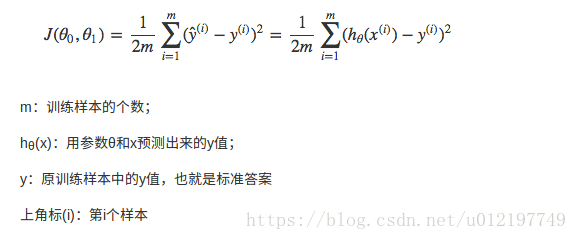
四、交叉熵代价函数
在逻辑回归中,最常用的是代价函数是交叉熵(Cross Entropy),交叉熵是一个常见的代价函数,在神经网络中也会用到。
(1)对交叉熵的解释:
交叉熵是对“出乎意料”的是事件的度量。假如我们认为p是y=1的概率,(1-p)是y=0的概率,那么交叉熵衡量的是我们在知道y的真实值时平均“出乎意料”的程度。当输出是我们期望的值时,我们“出乎意料”程度较低;当输出不是我们期望的值时,我们“出乎意料”的程度较高。
(2)交叉熵公式:

(3)交叉熵推导。
=>推导过程:
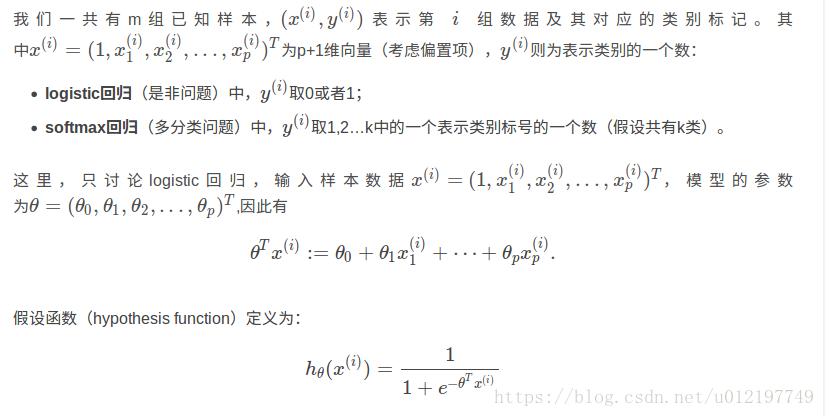

我们将概率取对数,其单调性不变,有
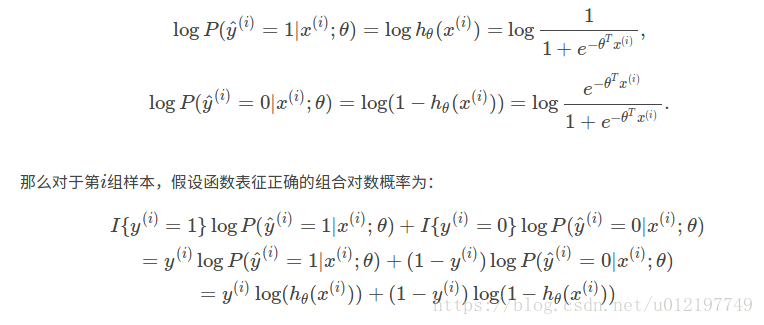

则取0。那么对于一共m组样本,我们就可以得到模型对于整体训练样本的表现能力:

推导结束。
参考文献:https://blog.youkuaiyun.com/jasonzzj/article/details/52017438
https://blog.youkuaiyun.com/u014313009/article/details/51043064
---------------------------------------------------------------------------------------------------------------
扩充:交叉熵继续化简的结果:
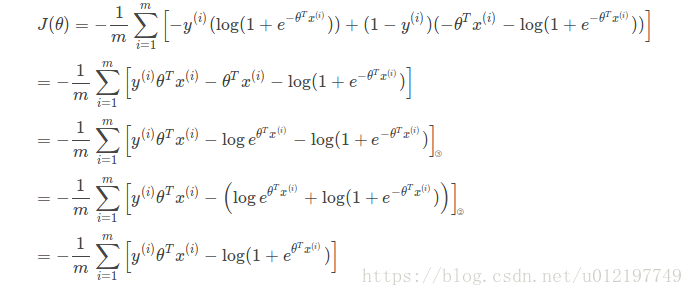

| sigmoid函数和假设函数长的是一个样的啊!!!!快被它们几个绕晕了。 |
五、逻辑回归代价函数
逻辑回归是神经网络的一种特例,因此神经网络中的代价函数与逻辑回归中的代价函数很相似:

这里多了一层求和项,是因为神经网络的输出值一般不是单一的值,K表示在多分类问题中的类型数。
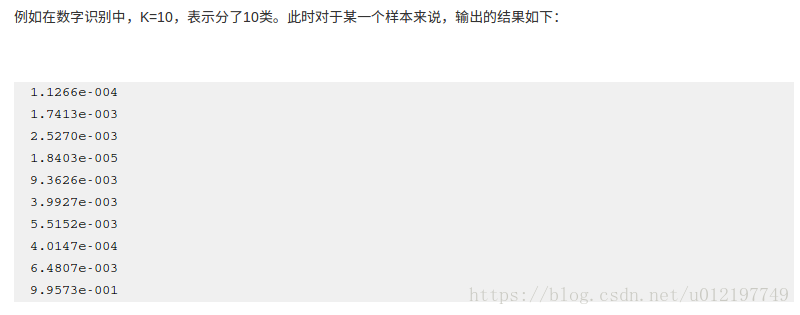

第六、softmax 回归算法的代价函数(在逻辑斯蒂回归中扩展到K类问题)
softmax回归算法中的代价函数为:
在Softmax回归中将  分类为类别
分类为类别  的概率为:
的概率为:
-
 .
.
我们通过添加一个权重衰减项  来修改代价函数,这个衰减项会惩罚过大的参数值,现在我们的代价函数变为:
来修改代价函数,这个衰减项会惩罚过大的参数值,现在我们的代价函数变为:
为了使用优化算法,我们需要求得这个新函数  的导数,如下:
的导数,如下:
通过最小化  ,我们就能实现一个可用的 softmax 回归模型。
,我们就能实现一个可用的 softmax 回归模型。
================第二部分激活函数================
一、什么是激活函数+激活函数的作用
=>不用激活函数可不可以?答案是不可以。
=>激活函数是什么?激活函数是这样的一种函数,首先它们具有以下的一些性质:可微性、单调性、以及输出值的范围是有限的。其次,激活函数一般使用在神经网络中。最后,激活函数的作用是为了让网络具有非线性的建模能力。
那么激活函数应该具有什么样的性质呢? 可微性: 当优化方法是基于梯度的时候,这个性质是必须的。 |
=>激活函数有什么用?激活函数的主要作用是提供网络的非线性建模能力。如果没有激活函数,那么该网络仅能够表达线性映射,此时即便有再多的隐藏层,其整个网络跟单层神经网络也是等价的。因此也可以认为,只有加入了激活函数之后,深度神经网络才具备了分层的非线性映射学习能力。
二、常见的激活函数有哪些?各自的应用场景是什么?如何选择合适的激活函数?
从目前来看,常见的激活函数多是分段线性和具有指数形状的非线性函数
| 函数 | 优点 | 缺点 |
| sigmoid | 1.饱和性。从上图可以看到,其两侧导数逐渐趋近于0 2.sigmoid函数的输出均大于0,使得输出不是0均值,这称为偏移现象,这会导致后一层的神经元将得到上一层输出的非0均值的信号作为输入。 | |
tanh | 它的输出均值是0,使得其收敛速度要比sigmoid快,减少迭代次数。 | tanh一样具有软饱和性,从而造成梯度消失。 |
| softmax激活函数 | ||
三、sigmoid激活函数
1.函数的公式以及数学图像。
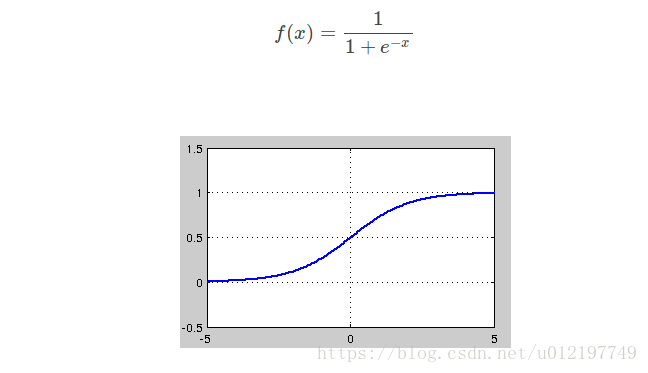
sigmoid 是使用范围最广的一类激活函数,具有指数函数形状,它在物理意义上最为接近生物神经元。此外,(0, 1) 的输出还可以被表示作概率,或用于输入的归一化,代表性的如Sigmoid交叉熵损失函数。
然而,sigmoid也有其自身的缺陷,最明显的就是饱和性。从上图可以看到,其两侧导数逐渐趋近于0

sigmoid 的软饱和性,使得深度神经网络在二三十年里一直难以有效的训练,是阻碍神经网络发展的重要原因。具体来说,由于在后向传递过程中,sigmoid向下传导的梯度包含了一个 f′(x) 因子(sigmoid关于输入的导数),因此一旦输入落入饱和区,f′(x) 就会变得接近于0,导致了向底层传递的梯度也变得非常小。此时,网络参数很难得到有效训练。这种现象被称为梯度消失。一般来说, sigmoid 网络在 5 层之内就会产生梯度消失现象
此外,sigmoid函数的输出均大于0,使得输出不是0均值,这称为偏移现象,这会导致后一层的神经元将得到上一层输出的非0均值的信号作为输入。
四、RELU激活函数、P-ReLU, Leaky-ReLU
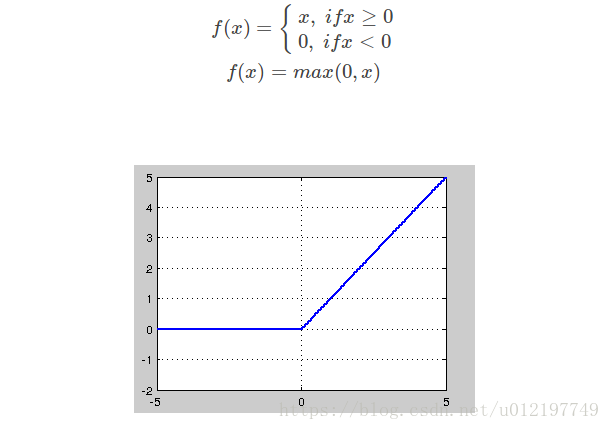
ReLU的全称是Rectified Linear Units,是一种后来才出现的激活函数。 可以看到,当x<0时,ReLU硬饱和,而当x>0时,则不存在饱和问题。所以,ReLU 能够在x>0时保持梯度不衰减,从而缓解梯度消失问题。这让我们能够直接以监督的方式训练深度神经网络,而无需依赖无监督的逐层预训练。
然而,随着训练的推进,部分输入会落入硬饱和区,导致对应权重无法更新。这种现象被称为“神经元死亡”。与sigmoid类似,ReLU的输出均值也大于0,偏移现象和 神经元死亡会共同影响网络的收敛性。
针对在x<0的硬饱和问题,我们对ReLU做出相应的改进,使得
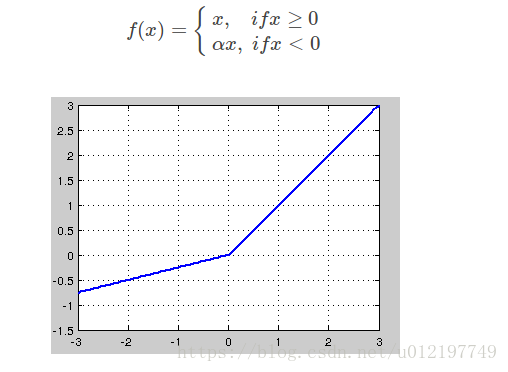
这就是Leaky-ReLU, 而P-ReLU认为,α也可以作为一个参数来学习,原文献建议初始化a为0.25,不采用正则。
五、tanh函数
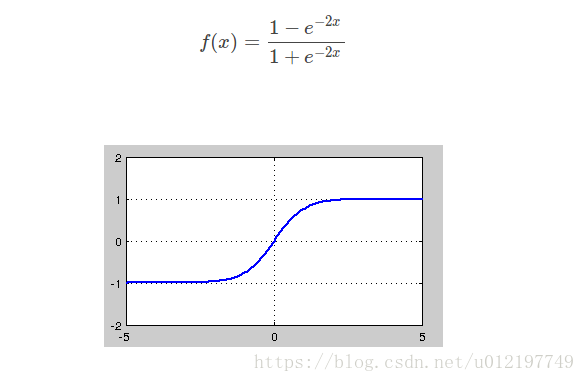
tanh也是一种非常常见的激活函数。与sigmoid相比,它的输出均值是0,使得其收敛速度要比sigmoid快,减少迭代次数。然而,从途中可以看出,tanh一样具有软饱和性,从而造成梯度消失。
第六、ELU
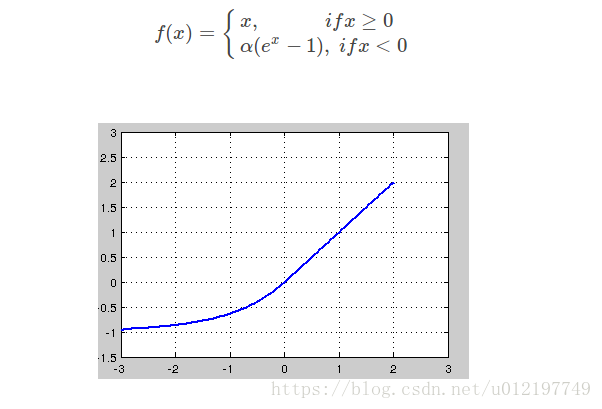
融合了sigmoid和ReLU,左侧具有软饱和性,右侧无饱和性。右侧线性部分使得ELU能够缓解梯度消失,而左侧软饱能够让ELU对输入变化或噪声更鲁棒。ELU的输出均值接近于零,所以收敛速度更快。在 ImageNet上,不加 Batch Normalization 30 层以上的 ReLU 网络会无法收敛,PReLU网络在MSRA的Fan-in (caffe )初始化下会发散,而 ELU 网络在Fan-in/Fan-out下都能收敛。
第七、maxout函数

这个激活函数有点大一统的感觉,因为maxout网络能够近似任意连续函数,且当w2,b2,…,wn,bn为0时,退化为ReLU。Maxout能够缓解梯度消失,同时又规避了ReLU神经元死亡的缺点,但增加了参数和计算量。
第八、softmax激活函数
1.softmaxe函数的数学表达式
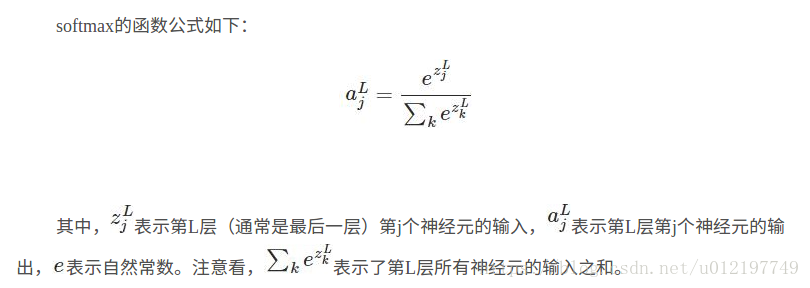
2.softmax的应用场景
用于多分类过程中,它将多个神经元的输出,映射到(0,1)区间内,可以看成概率来理解,从而来进行多分类!
3.softmax激活函数的特点
1.它把每个神经元的输入占当前层所有神经元输入之和的比值,当作该神经元的输出。这使得输出更容易被解释:神经元的输出值越大,则该神经元对应的类别是真实类别的可能性更高。
2.softmax不仅把神经元输出构造成概率分布,而且还起到了归一化的作用,适用于很多需要进行归一化处理的分类问题。
4.softmax激活函数的求导(反向传播)
由于softmax在ANN算法中的求导结果比较特别,分为两种情况。求导过程如下所示:

参考资料:https://blog.youkuaiyun.com/u014313009/article/details/51045303





 本文详细介绍了机器学习中的代价函数与激活函数,包括它们的定义、常见类型及其应用场景。探讨了代价函数如均方误差、交叉熵等在不同算法中的应用,并深入解析了激活函数如ReLU、tanh等在神经网络中的作用。
本文详细介绍了机器学习中的代价函数与激活函数,包括它们的定义、常见类型及其应用场景。探讨了代价函数如均方误差、交叉熵等在不同算法中的应用,并深入解析了激活函数如ReLU、tanh等在神经网络中的作用。
![\begin{align}J(\theta) = - \frac{1}{m} \left[ \sum_{i=1}^{m} \sum_{j=1}^{k} 1\left\{y^{(i)} = j\right\} \log \frac{e^{\theta_j^T x^{(i)}}}{\sum_{l=1}^k e^{ \theta_l^T x^{(i)} }}\right]\end{align}](https://i-blog.csdnimg.cn/blog_migrate/a073892ce762fc79f27dd3c5ed17c311.png)
![\begin{align}J(\theta) = - \frac{1}{m} \left[ \sum_{i=1}^{m} \sum_{j=1}^{k} 1\left\{y^{(i)} = j\right\} \log \frac{e^{\theta_j^T x^{(i)}}}{\sum_{l=1}^k e^{ \theta_l^T x^{(i)} }} \right] + \frac{\lambda}{2} \sum_{i=1}^k \sum_{j=0}^n \theta_{ij}^2\end{align}](https://i-blog.csdnimg.cn/blog_migrate/bc700706ad83bdf7e6b610573463ffb1.png)
![\begin{align}\nabla_{\theta_j} J(\theta) = - \frac{1}{m} \sum_{i=1}^{m}{ \left[ x^{(i)} ( 1\{ y^{(i)} = j\} - p(y^{(i)} = j | x^{(i)}; \theta) ) \right] } + \lambda \theta_j\end{align}](https://i-blog.csdnimg.cn/blog_migrate/1e2bd9b5ae929e485dc03f413d9e163f.png)
















 1472
1472

 被折叠的 条评论
为什么被折叠?
被折叠的 条评论
为什么被折叠?








